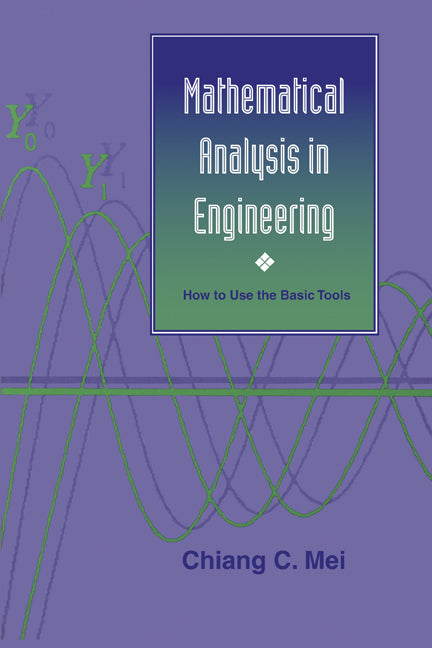Freshly Printed - allow 6 days lead
Couldn't load pickup availability
Mathematical Analysis in Engineering
How to Use the Basic Tools
A paperback edition of successful and well reviewed 1995 graduate text on applied mathematics for engineers.
Chiang C. Mei (Author)
9780521587983, Cambridge University Press
Paperback, published 13 January 1997
480 pages, 118 b/w illus.
22.8 x 15.1 x 2.6 cm, 0.655 kg
'All-in-all, this is an excellent book with a readable style. The mathematical analysis is clear … The examples and illustrations are well-chosen and as simple as can be without being trivial. They are also practical and very diverse.' J. A. Hudson, Journal of Fluid Mechanics
This user-friendly 1995 text shows how to use mathematics to formulate, solve and analyse physical problems. Rather than follow the traditional approach of stating mathematical principles and then citing some physical examples for illustration, the book puts applications at centre stage; that is, it starts with the problem, finds the mathematics that suits it and ends with a mathematical analysis of the physics. Physical examples are selected primarily from applied mechanics. Among topics included are Fourier series, separation of variables, Bessel functions, Fourier and Laplace transforms, Green's functions and complex function theories. Also covered are advanced topics such as Riemann–Hilbert techniques, perturbation methods, and practical topics such as symbolic computation. Engineering students, who often feel more awe than confidence and enthusiasm toward applied mathematics, will find this approach to mathematics goes a long way toward a sharper understanding of the physical world.
Preface
Achnowledgments
1. Formulation of physical problems
2. Classification of equations
3. One-dimensional waves
4. Finite domains and separation of variables
5. Elements of Fourier series
6. Introduction to Green's functions
7. Unbounded domains and Fourier transforms
8. Bessel functions and circular domains
9. Complex variables
10. Laplace transform and initial value problems
11. Conformal mapping and hydrodynamics
12. Riemann–Hilbert problems in hydrodynamics and elasticity
13. Perturbation methods - the art of approximation
14. Computer algebra for perturbation analysis
Appendices
Bibliography
Index.
Subject Areas: Engineering: general [TBC]


